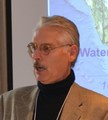DEMONSTRATION APPLICATION OF ECOLOGICAL ACCOUNTING PROCESS: Saratoga Miracle Beach in the Comox Valley Regional District, completed in 2022

“The Saratoga Miracle Beach study area within the Comox Valley Regional District (CVRD) is defined by its water assets. The presence of wetlands differentiates the Saratoga Miracle Beach EAP Project from other EAP case studies and added a new dimension to the EAP analysis. The CVRD anticipates using this work, together with the Master Drainage Plan and flood mapping work, to inform the development of new regulatory tools and to assist in communicating the value of these natural assets to the public during future community engagement,” stated Darry Monteith.










